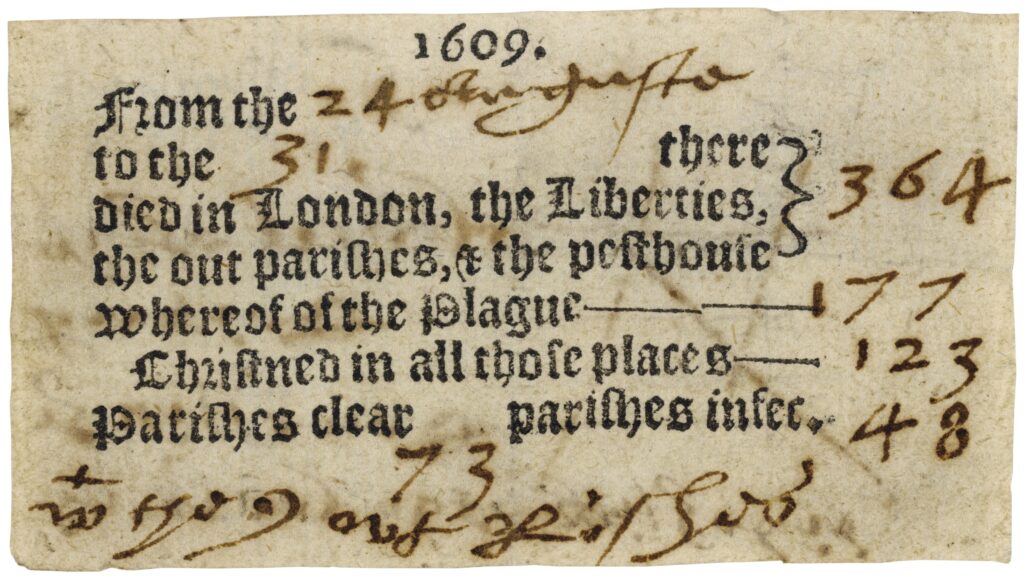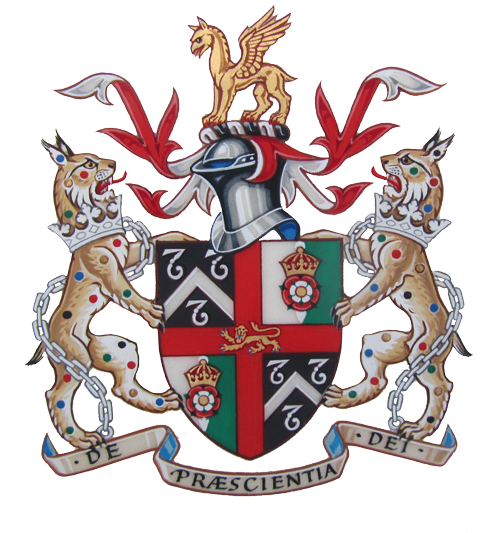On this day in 1607 the Court Minutes recorded:
Forasmuch as Francis Rowden clerk of this company hath lately
buried his child of the plague which was carried through the gate of
the hall of this company, by reason whereof there is express
commandment from the Lord Mayor of this City that neither we the
said masters nor assistants nor any of us nor any of our officers
should meet for the space of 28 days after the burial of the said
child, therefore it is ordered by this court that the audit of the
Master’s accompt for the year now last past shall be holden and
taken at the now dwelling house of the said Joseph Ffenton situate in
St. Bartholomew’s Court, and the same to be as effectual to all
intents and purposes as if the same had been done at the said hall.
And all courts which within the time before specified are to be kept
shall be holden in the said Joseph Fenton’s house.


At this period the population of London stood at around 200,000; plague was endemic, with regular outbreaks from 1603 until the Great Plague of 1665. In the early part of the century, when reported deaths rose above 50 per week measures to limit infection were imposed, such as prohibiting members of the Company from meeting at the Hall as shown in the Court Minutes and by banning public performance in the City’s playhouses. 1606-1607 saw 50 weekly deaths frequently exceeded, with public performance subsequently prohibited between March-December 1606 and again from July-November 1607.
While access to the Royal court by outsiders was itself restricted during plague, it appears that the only opportunities for William Shakespeare and his players to perform during these closures were at court; thus the first recorded performance of King Lear was before James I at Whitehall Palace in December 1606. The entry in the register of the Stationers’ Company for the play on November 26 1607 stated:
“Master William Shakespeare his ‘history of Kinge Lear’ as yt was played before the kinges maiestie at Whitehall vppon Sainct Stephens night at Christmas Last by his maiesties servantes playinge vsually at the ‘Globe’ on the Banksyde.”
Shakespeare’s own ‘base born’ (illegitimate) nephew, the son of his brother Edmund, was buried in 1607 at St Giles’ Cripplegate, while Edmund himself would be buried in Southwark by the end of that year.
Also entered into the Stationers’ register in November 1607 was dramatist and pamphleteer Thomas Dekker’s The Dead Tearme, an imagined dialogue between the cities of Westminster and London, in which he wrote of the latter:
“Sickness hath dwelt a long time in thy Chambers, she doth now walk still in a ghostly and formidable shape uppe and down my streets…Dead are our pleasures, for wee do now take delight in nothing but mourning: Dead are our houses of leysure, and those which are full of businesse.”
In 1662, John Graunt, known as the world’s first epidemiologist and demographer examined and summarised data for burials in the City, published as Observations made upon the Bills of Mortality. The Bills were weekly ‘books of death’ compiled intermittently from 1532 and continuously from 1603, with the duty of production imposed by charter upon the Worshipful Company of Parish Clerks by James I. Annual returns were made to the Lord Mayor and the monarch on 21 December (the feast of St Thomas), to coincide with the calendar of the City of London. According to Graunt, 3,318 of the 5,670 total 1607 burials in London were attributable to the plague.
Further reading:
Politics, plague, and Shakespeare’s theater : the Stuart years, Leeds Barroll (Ithaca and London: Cornell University Press, 1991), available to read online here.
Epidemiology: An Introduction: Pioneers in Epidemiology and Public Health: John Graunt (1620-1674), available to read online here.
Natural and Political OBSERVATIONS Mentioned in a following INDEX, and made upon the Bills of Mortality, John Graunt (London : Printed by Tho. Roycroft, for John Martin, James Allestry, and Tho. Dicas), available to read online here.
Queer virgins and virgin queans on the early modern stage, Mary Bly (Oxford [U.K.] ; New York : Oxford University Press, 2000), available to read online here.
